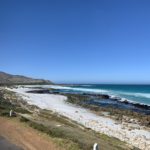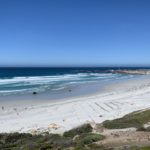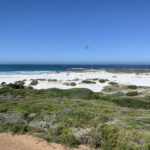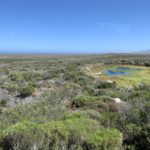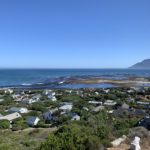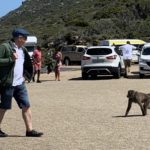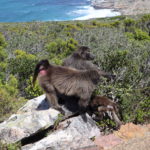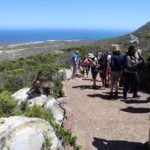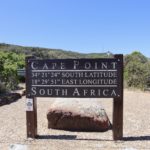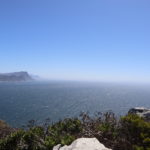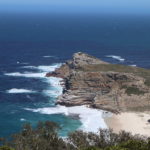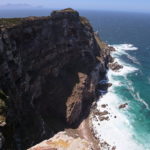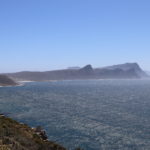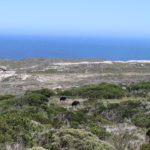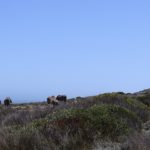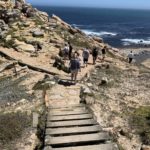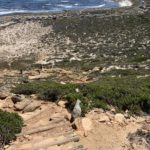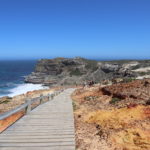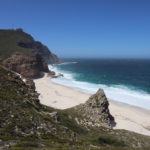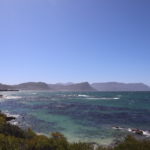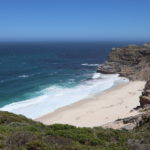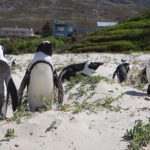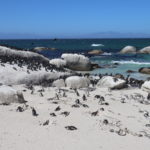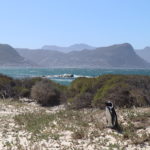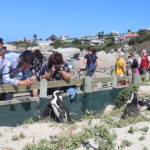Vistiting the end of the world - Cape of Good Hope
There are two things not everybody knows about this place.
- It used to be called “Cape of Storms” by the Portuguese explorer Bartholomew Dias before King John II of Portugal renamed it to the Cape of Good Hope.
- No, this is not the most southern tip of the African continent, but the most southwestern one. The most southern one is Cape Agulhas, about 150 km away.
When I visited the Cape, I understood why Dias had called it the Cape of Storms because I had to grip my camera and phone very tightly not to lose them in the wind. I was travelling with the red busses again, a full day trip along the beautiful coastline for 440 ZAR (31 EUR) and the first stop was Cape Point. Before leaving the bus, they asked us to not have food or drinks visibly with us to avoid attacks from the opportunistic baboons. Some people must have neglected this advice because I heard some screaming and shushing when I started my walk to the lighthouse. Taking pictures took some effort with the intense wind, but the views were incredible.
Next, the tour offered a short walk (about 40 min) down to the Cape of Good Hope. But they urged those with dodgy knees and any level of vertigo to take the bus, which I fully support because the beautiful path went mainly downhill, which can be hard on the knees. It included several sets of stairs of questionable sturdiness without any sign of handrails. I saw some people walking there in flipflops, but I was glad I was wearing my trainers. Not far from the path, we spotted some ostriches who seemed to be roaming free and were not bothered by our presence in the slightest.
We stopped a moment on the rocks above the Cape. I enjoyed the moment, just sitting in the wind at the “end of the world”. I thought about how many sailboats had stopped here to fill up their stocks before they continued their dangerous journey to India to buy spices and other luxurious goods. My daydream vanished into thin air when I joined the cue of tourists for my picture in front of the famous sign of the Cape of Good Hope.
Penguins at Boulder's Beach
The next stop was Boulders Beach, famous for the penguin colonies living there. While you can get lucky to spot some at the general beach, I recommend paying the 9 Euros entrance fee to their breeding places. This way you’re not only guaranteed to see loads of penguins, but you also help to protect them. The penguins apparently understand that the large mammals sometimes come incredibly close to them with their strange apparatuses, but that they never hurt them. Thus, they couldn’t care less about all the attention and the cameras in front of them – unless someone gets too close, then they lash out quickly with their sharp beaks.
This stop was a bit short, so I went and took my photos and bought something from the gift shop. On the way to the bus, I stopped by the one-legged man, who was selling self-made wooden animals.
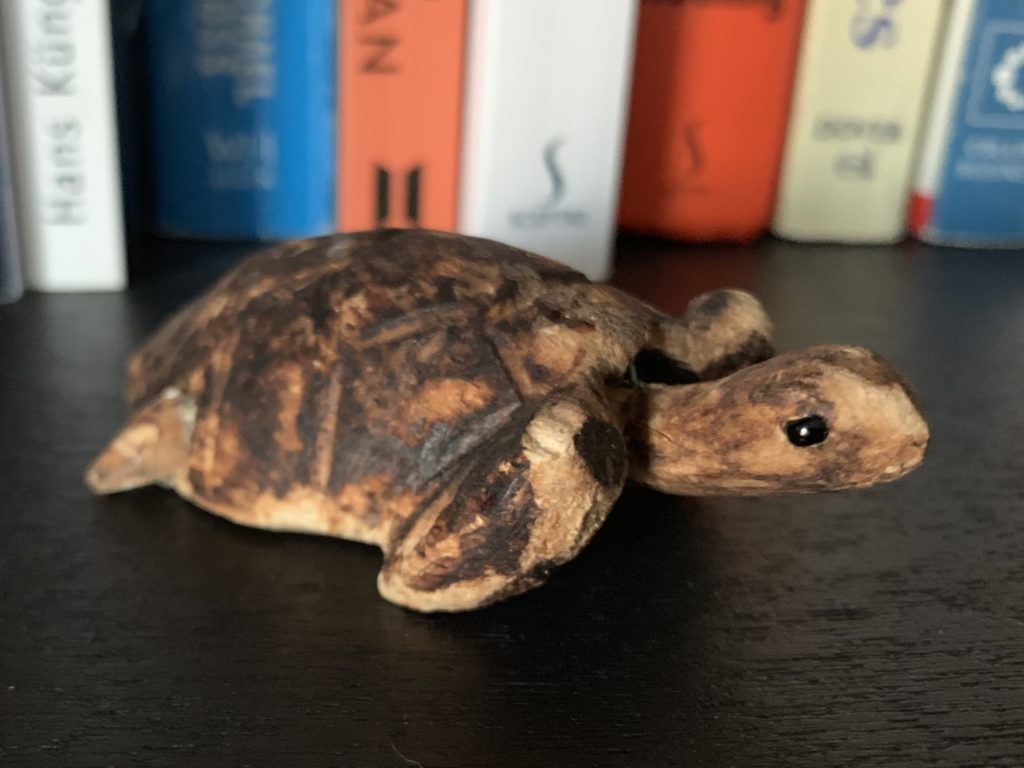
I bought a little wooden tortoise with a wiggling head, and we chatted for a moment. When I asked him if he was doing alright, he replied: I want to. His attitude and dignity touched me. The little souvenir now decorates my bookshelves and is a reminder to stay humble and work for what I want.
This tour with the Red Bus was well organized like always. But I do recommend you take some food with you as you can either eat at the Cape or walk around and take in where you are. Wear proper shoes if you plan to do the hike and don’t forget the sunscreen, you might not feel the intensity of the sun in that wind, but it’s there.

